Menu
Please click on a link to take you to each page.

General Care
Personality/Habits
Lifespan
Nail & Teeth trimming
Baths
Introduction/Fighting
Quarantine

Colors & Markings
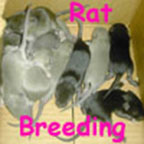
Sexing info
Pre-Breeding info
Pregnancy Info
Baby Info
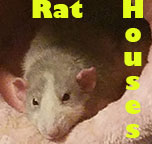


Health Tips
Eyes
Mycoplasma
Pneumonia
Temperature
Bugs
Veterinary Care
Abscesses & Tumors
Bumblefoot
Sprained ankles/Torn toenails
Wounds
Degloving/Tail injury
Aggression
Ears
Megacolon
Barbering
Old Age
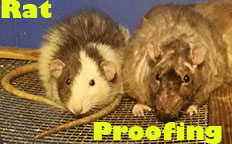
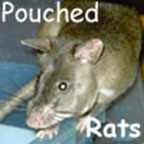




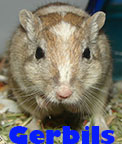



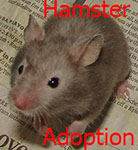

Please click on a picture to take you to each page
80stoysale.com HOME
(Pregnant rat, baby care info & more)
The information is not necessarily to help breeders breed.
Separating at least the sexes you can identify will help so not all of the females will become pregnant. Rats can breed as young as 4 weeks, altho usually won't until 6 weeks.
(Below is generalizations and is not true in ALL cases.)
Common signs your female may be in heat are:
She sticks her butt up in the air.
When you touch her back she arches her back.
She is overly jumpy or squeaky when you touch her.
It has been rumored females in heat will wiggle their ears frequently.
She runs and stops frequently.
Overall agitated behavior.
Some Females will jump all over a male and persuade him to chase her when she is ready to mate, frequently sticking her rump in his face.
Are you prepared or do you know what to do if your rat prolapses? A Prolapse is when a female gives birth and then her uterus basically falls out and needs to be put back inside. If a Female prolapses it is unlikely she will nurse her babies.
Feeder rats are commonly inbred and in poor health and should not be bred.
A good breeder knows the bloodlines/genetics of their rats and does not breed any rats with health issues, Mycoplasma flair ups, and tumor history in their bloodlines.
Anyone can be a breeder, not everyone can be a Good breeder.
Being a good breeder is time consuming hard work.
What to know and look for before breeding:
A Responsible breeder knows the genetics/background of their ratties and does not breed any with tumors, Mycoplasma flair ups or any illness in their background.
Anyone can be a breeder, just not everyone can be a good breeder!
I keep track of every rats parents, Grandparents or any relationship to others. I also keep track of every color baby they have ever had, how many babies they have in every litter and track best i can their health throughout their lives.
If a rat becomes ill or i hear of one of my rats (that have been adopted out) becoming ill or developing a tumor i retire the lines immediately and will no longer breed any from that line.
If a rat is infected with Pneumonia as a baby, they usually don't express symptoms until they are 3 months old.
Petite or very young mother's babies, on occasion can have babies get stuck in the birth canal if they are to large and cause serious complications.
Line breeding is mainly done if the parents are becoming to old to breed any longer and no other rats with that color or pattern are available to breed.
However Line breeding should not really be necessary as you can just find another rat with the same pattern or color as desired and get the desired color babies with a new mate.
Tips to know during pregnancy:
Breeding, fertilization and Gestation always depends on the females cycle and not all have the same cycle and it can vary by a couple of days.
Do not rely on what the pet store tells you -check for yourself or you just may find a surprise of babies soon after getting your ratties.
Some Pet stores don't separate the sexes, or they think they have, but in reality haven't separated all of them.
Sometimes males and females are mixed in the same transporter on their way to the Pet store -so they could be pregnant.
Aquariums make the safest place for a rat to give birth. If you have a wire bottom or sided cage the babies could fall through or out of the cage, causing them injury or possibly death if they get stuck, are unable to free themselves or fall to the floor below where other animals can get them, or they can get lost.
Safe cages for babies are ones with a flat bottom and 1/4 inch cage bar spacing or less.
It is best to house a nursing Mom separate from others.
Leaving Daddy in with Mom to help with the babies is ok, most Dad's will take care of the babies cleaning them, wrestling and letting the babies sleep on his back. Mom can actually get a break when Daddy is left in because they can play with him. Leaving the male in may result in back to back litters.
If you do let Mom out to play after giving birth make sure the cage door is closed or she may grab the babies one by one and transport them to somewhere else.
Rats have 12 nipples so any number of babies over 12 can sometimes be difficult for Mom to feed them all and rotate them.
This is because in the wild, dead babies can attract predators so she cleans up to try to protect the rest of the family from predators. On very rare occasions the mom may eat the live babies if the mom is not properly fed or if she thinks they are sick.
The babies can be handled from birth but as a precaution make sure to touch every single baby and Mom so that they all smell the same. On occasion if only one baby is touched it can smell different and Mom will put it outside of the nest.
It is recommended to wait a few weeks between litters to allow mom to properly take care of her babies, recover and heal.
If the female is hurting the babies or isn't nursing them you will need to try to locate another nursing female.
When adding babies to another Mothers litter, pick up all the babies and rub them in the surrogate mom's bedding and mix them up, this will help all the babies smell the same, make sure to pet mom as well.
If another nursing mother is unavailable you can try separating the babies for small periods of time to see if giving mom a few small breaks will help relieve her stress and allow her to calm down and nurse the babies.
if the Mother refuses to nurse the babies after several hours after giving birth you and you can not locate a surrogate mom you will need to hand feed them.
Their ears will be fully opened at about 9 days old.
Females can stay with Mom and Males with Dad after weaning.
*I recommend laying down newspaper on the bottom of the cage and then covering the bottom with strips of blankets, fleece or paper towels -make sure the fabric does not have holes or strings -the babies and even mom could get wrapped up, stuck or injured.
Some people prefer to do a gradual weaning process where they separate the babies from mom for a few hours (1-3 hours) a day the 4th week and then put them back in with mom, everyday separating them for a little longer than the day before. This can be done by letting mom out to play and run around on her own while the babies stay in the cage.
Separate the males and females and put them in separate cages.
The Females can live with their Mother and the males can live with Daddy.
If your female refuses to care for and feed her babies you will need to step in or all of the babies will die.
On occasion some females, especially hairless females have problems lactating and are unable to produce milk or are unable to produce enough milk to sustain all the babies.
If possible try to find another lactating female that could nurse the babies, if one is not available then you will need to hand feed the babies.
Babies can be nursed with puppy milk, goats milk, kittens milk, baby formula and soy milk.
Baby formula should contain the least amount of iron you can find.
Fill a needle-less syringe or eye dropper with the milk and insert the syringe into the babies mouth -they will wiggle and squeak and probably drool some milk out of their mouths. Slowly feed the baby the milk.
After the baby has had some milk make sure to rub the babies belly/abdomen to help the baby digest the milk and go to the bathroom.
Babies should be fed every two hours for the first week, after the first week feeding can take place with a little more time in between feedings, such as every 3-4 hours.
The babies need their bellies rubbed after every feeding -to help digestion and to help them go to the bathroom. If you are hand feeding babies leave food out at all times, to encourage them to eat dry food.
After the babies open their eyes they will start eating a lot more dry food and you can put a small dish of milk in the cage and let them drink that way rather than syringe feeding them. (Be sure to have water available as well.)
It can be extremely difficult to hand feed baby rats and get them to survive. Sometimes they will die off one by one. Don't be surprised if not all of the babies make it. If you keep up with feedings regularly they can survive but hand feeding takes a lot of time and work.
The hand fed babies will need to be kept someplace warm were they can't escape and can stay cuddled up and warm, if they get to cold this can slow circulation and they may not make it.
If you happen to have two (Or more) rats that have similar markings and you are having trouble telling them apart here are a few ideas to help:
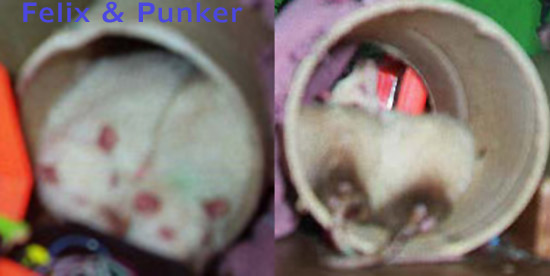
In some instances people like to keep males and females together so spaying or neutering may be done to prevent pregnancy.
Neutering is some instances can help aggressive males calm down and be less aggressive.
If you have an option to spay or neuter -neutering the male is usually a safer option as a spay is a more difficult process.
Spayed or neutered rats should be kept away from the opposite sex after surgery for at least two weeks (one month is better) to ensure they have recovered and healed from surgery.
It can be difficult to find a willing Vet and rather expensive to spay or neuter a rat, but it can be worth it if you want to have both males and females play together.
Email: DiscoPanth@gmail.com
Please visit all my Pages!